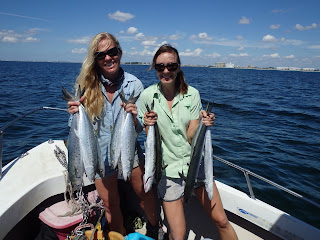 |
| Photo: Stubb |
Harder,
because fisheries are dynamic; and because there are an overwhelming number of factors like tides, temperature, salinity, composition of the ocean floor,
nutrients, and biological interactions among fish that complicate the data and
prevent straight forward cause and effect relationships from being identified.
Most fishermen have experienced this firsthand; one day the
bite is on fire and fish are practically jumping in the boat, but when you
return to the same spot a few days later there is nothing. Fish are finicky,
they move, and they are hidden from plain view.
 |
| Photo: Muehlstein |
Likewise, we all have some magic formula for a good fishing
day, whether it be based on tides, moon phases, water temperature, or changes
in air pressure. Different variations in the environment give different results
even when our approach remains the same. Add salinity, ocean currents,
nutrients, and water chemistry to the mix and there are almost too many
variables to handle.
These challenges, and the ever present possibility for
surprise or disappointment at the end of your line, are all part of the reason
fishing is such a captivating activity. It’s
these same challenges that makes studying fish a very difficult endeavor.
 |
| Photo: Cone |
Truthfully, we do not, and likely never will, know exactly
how many fish are living in the Gulf of Mexico. Marine scientists and fisheries
managers from across the country and around the globe share the challenge of
getting the best fisheries data possible to make sound fisheries management
decisions.
The following series of blogs titled “How hard can it really
be to count fish?” will explain how fish stocks are assessed, the difficulties
involved, and how scientist are continuously working to overcome the challenges
of studying fish.
 |
| Photo: NOAA |
The second piece titled “Fisheries Independent Data Collection” will explain the research that is done by scientist on the water.
The
final article - “South East Data Assessment and Review” - will explain how all the
data is brought together and used to make conclusions about the health of a
fish stock and the amount of fish that can be harvested.
So, stay tuned as the mystery of fisheries science is
revealed.
